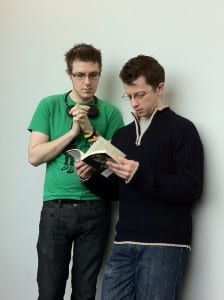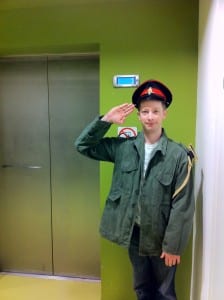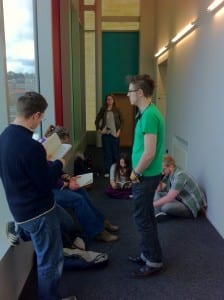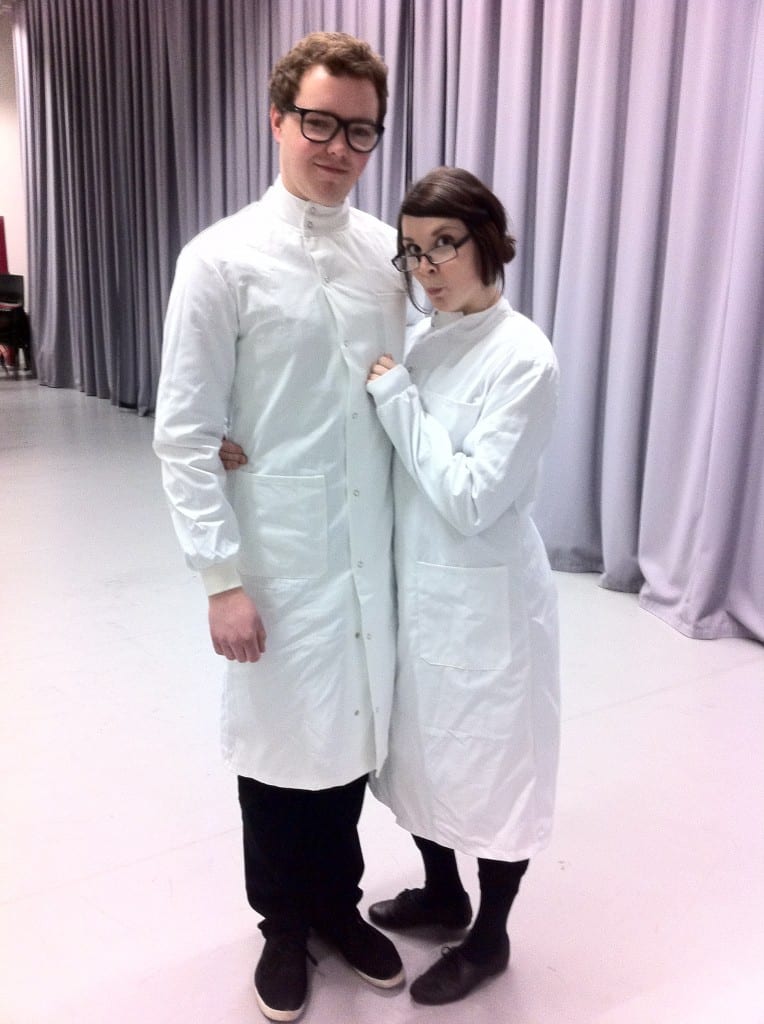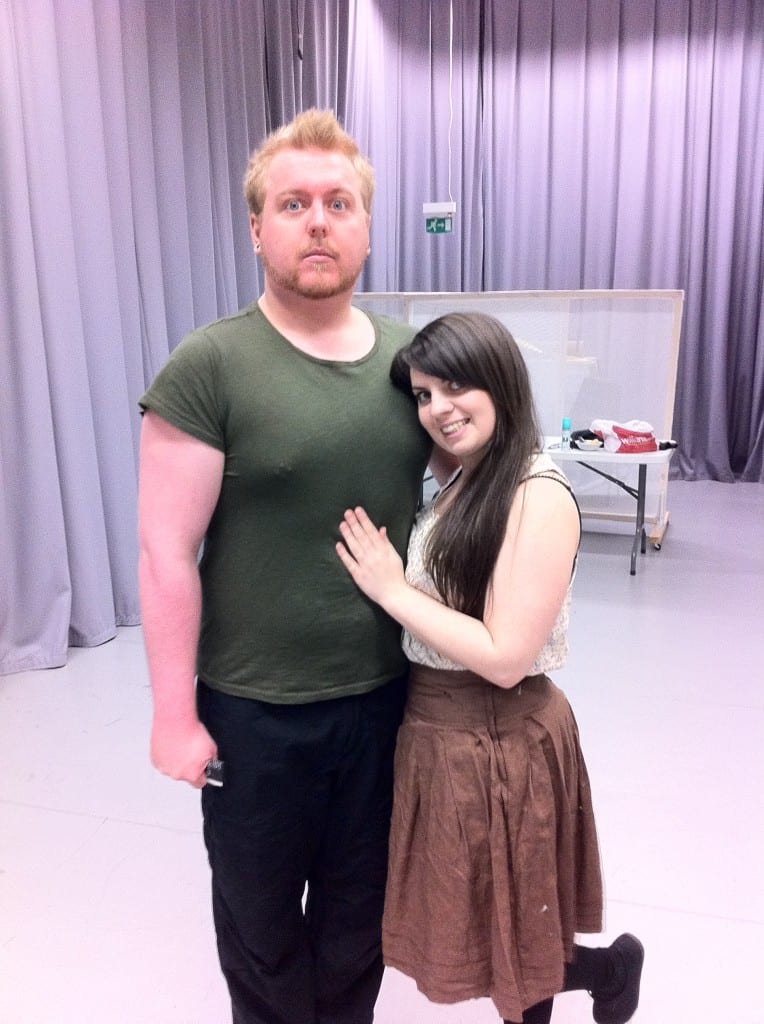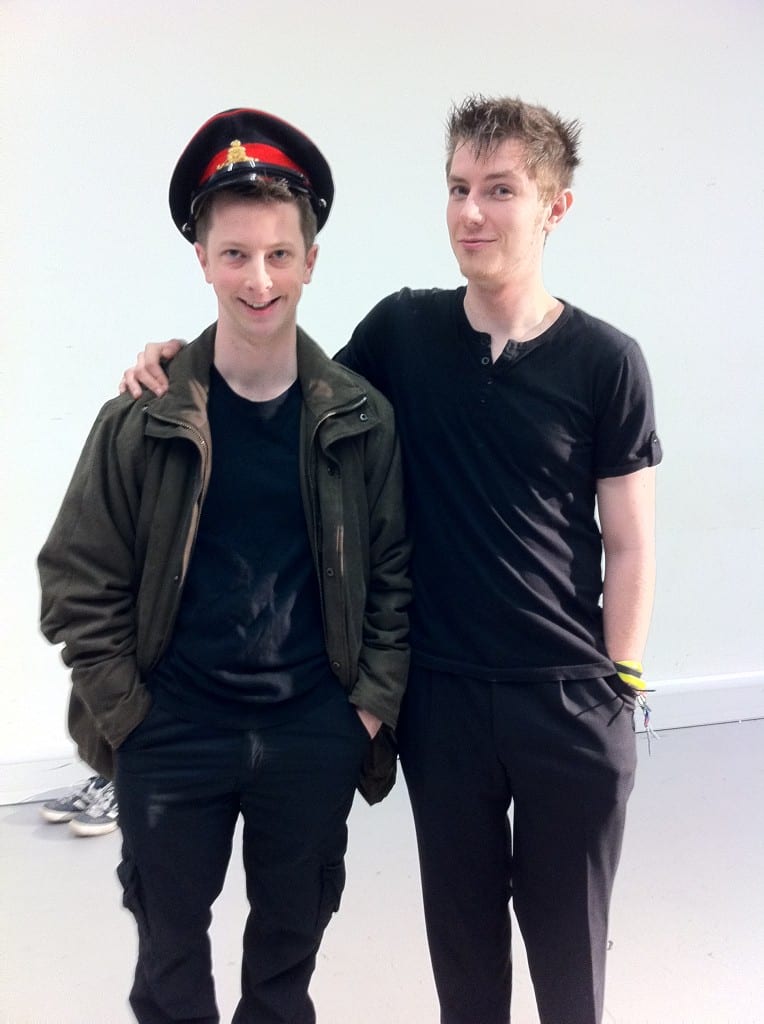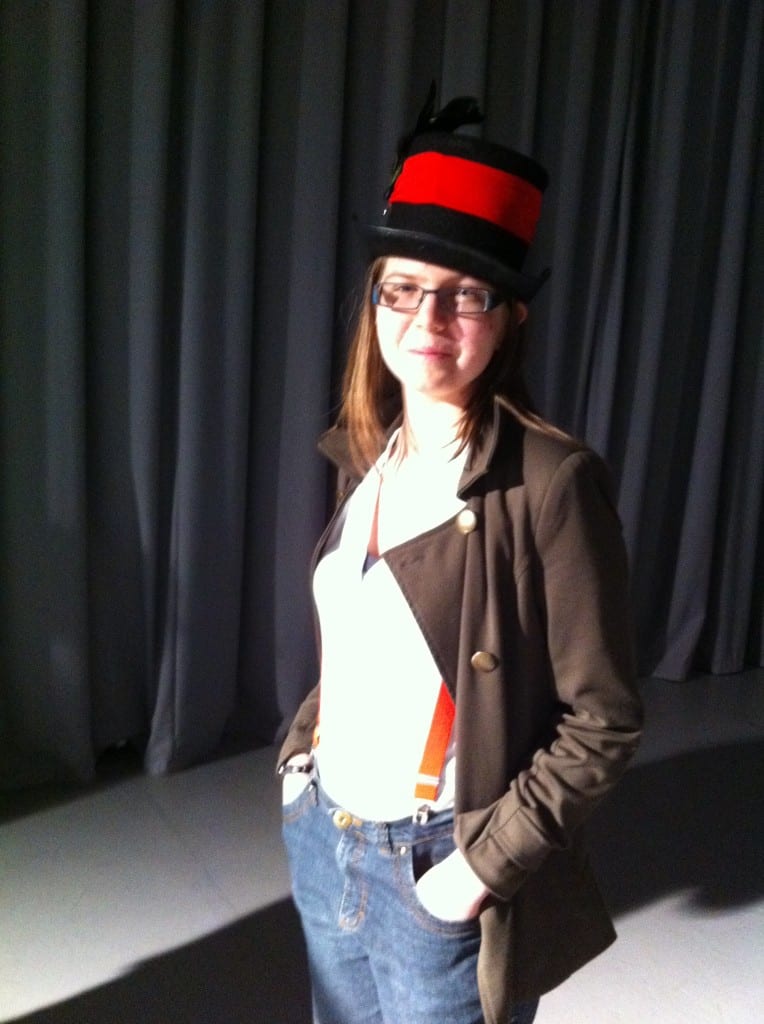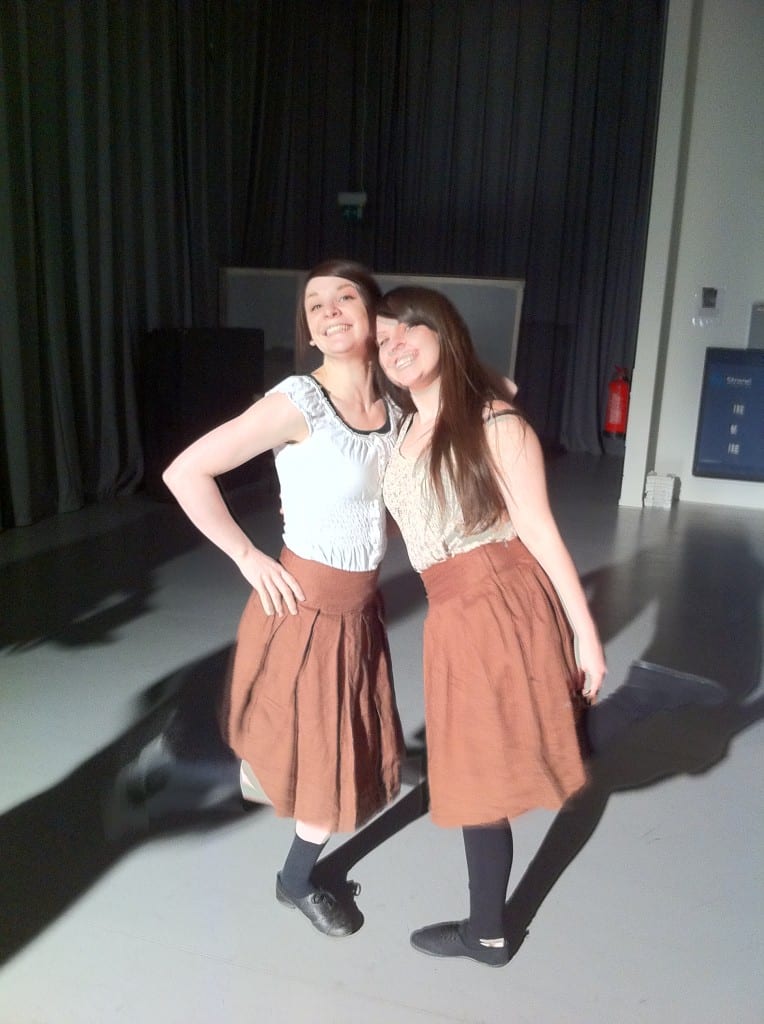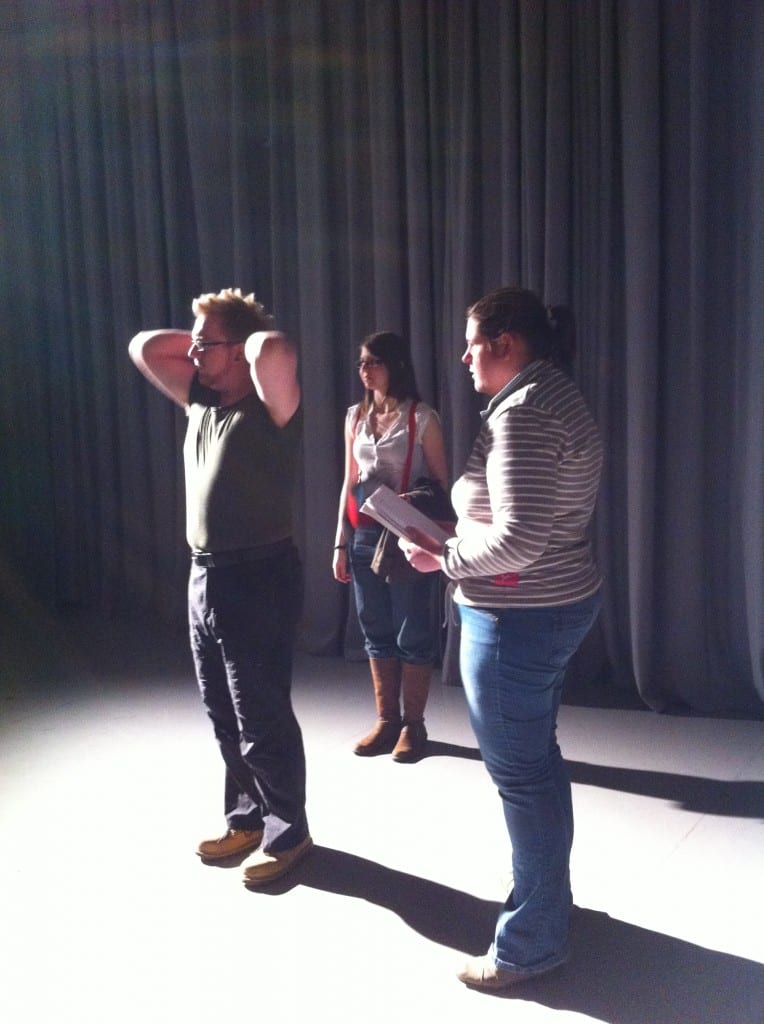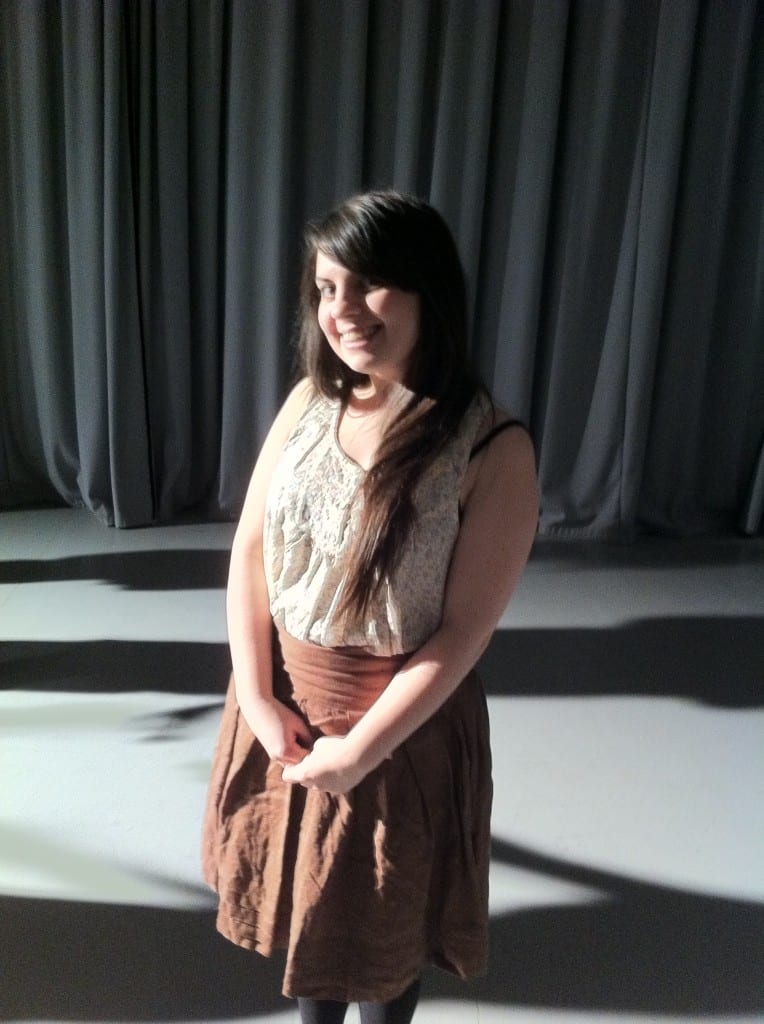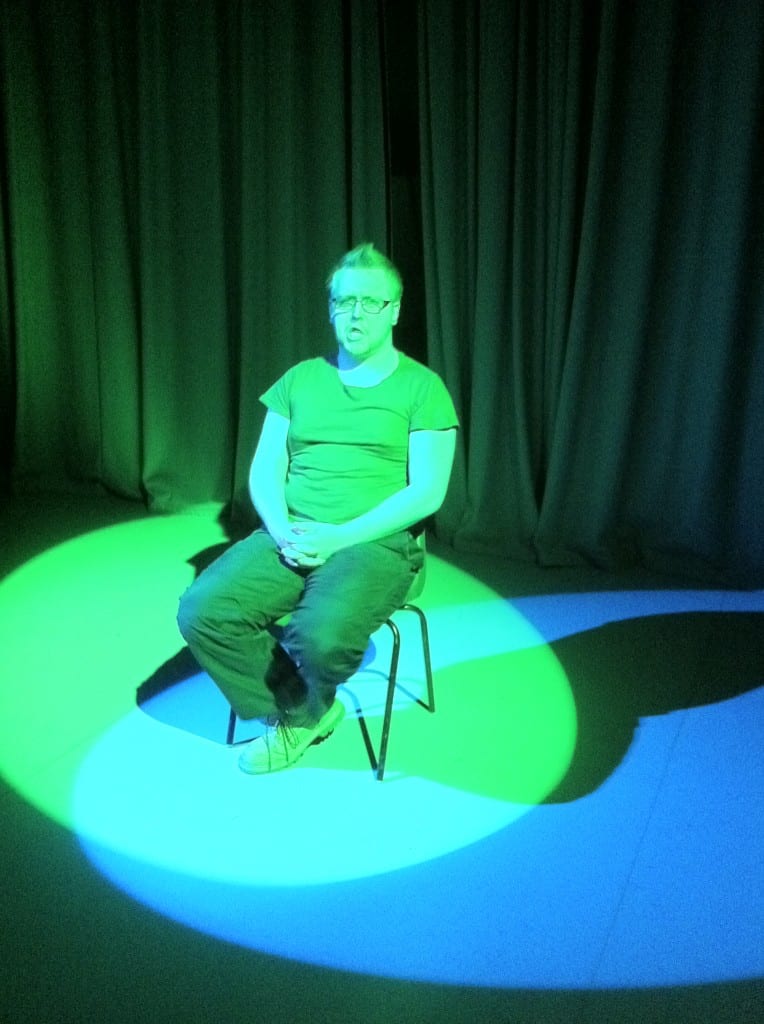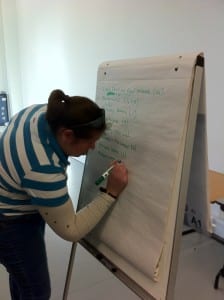Jimmy Morehouse
Technical Rehearsal
Doctor! Doctor!
I must admit I started off with the wrong idea for the Doctor’s characterisation. I took the character to be a comical ‘nerd’ or ‘geek’ who would be naturally awkward around others. But through the rehearsals this came to change. The character was to become more sinister and confident with his elaborate use of language.
Watching the film and continuous reading of the play started to change my mind about my first impressions of the Doctor. He uses aggressive language towards Woyzeck, and even speaks confidently to the Captain. He uses his knowledge to his strength, as no-one else seems to know what he is talking about with regards to the Latin words he uses. Rachel also noticed the more sinister side of the Doctor and so directed me to play him in a creepy and sinister way.
The character was then split into two due to the fact that there were not enough strong women parts in the play. I would be sharing the character with Amie. We looked at how their relationship would be and decided that they could be a husband and wife figure, both correcting and interrupting each other. We felt that this could continue on to Theatre Company where the two Doctor characters could end up having what the cast call a ‘Latin-off’ where each character would attempt to say the most and the longest Latin word.
Jimmy
Dramaturgy Performances and Promenade Theatre
In a recent rehearsal for Woyzeck our group decided on the scenes we would show for our dramaturgy performance. Whilst the selection of the scenes themselves was not set in stone we spent time discussing how we could present them to the audience. We wanted to try and perform our scenes as promenade theatre; this was inspired by a recent study of spatiality in millennial dramaturgies.
Woyzeck is a play that is open to dramaturgical study. Having being uncompleted by the author, Georg Buchner, before he died the play has no set scene order other than what previous writers have put together in an attempt to finish the play. Our group, wanted to make a more contemporary performance and so applied millennial dramaturgical theories to the play regarding spatiality, “we see a number of works in which spatial, rather than chronological principals are fundamental to the dramaturgy” (Behrndt & Turner, 2008, pp.195). With this in mind we could move away from just relying on chronological aspects but more on the spatial, allowing us to perform our chosen scenes as promenade theatre.
The group then selected the scenes that we were going to perform. We needed to make sure that each performing member of the group had a respectable amount of input to ensure their practical participation was noticed. With this in mind we set about choosing the right scenes to perform. We put a selection of four scenes together; making sure each performer had a decent amount to perform. However, Martyn did not have a character to perform on the few scenes we chose, so we decided that his character could lead the audience where we wanted them to go, thus making sure that we keep tight hold over what the audience see, rather than allowing them to wonder through each scene freely; this also allowed us to remain the dramaturges of the piece. “It is possible to follow the story of the performances, by following an actor through the various scenes.” (Behrndt & Turner, 2008, pp. 195). The scenes may not be able to tell the audience completely about the play it will give them some idea into how the character of Woyzeck is feeling, allowing them to draw their own conclusion about why we chose the scenes we performed, and why we chose to perform them the way we did.
Works Cited.
Behrndt, Synne K. & Cathy Turner (2008) Dramaturgy and Performance, Palgrave Macmillan: Hampshire
